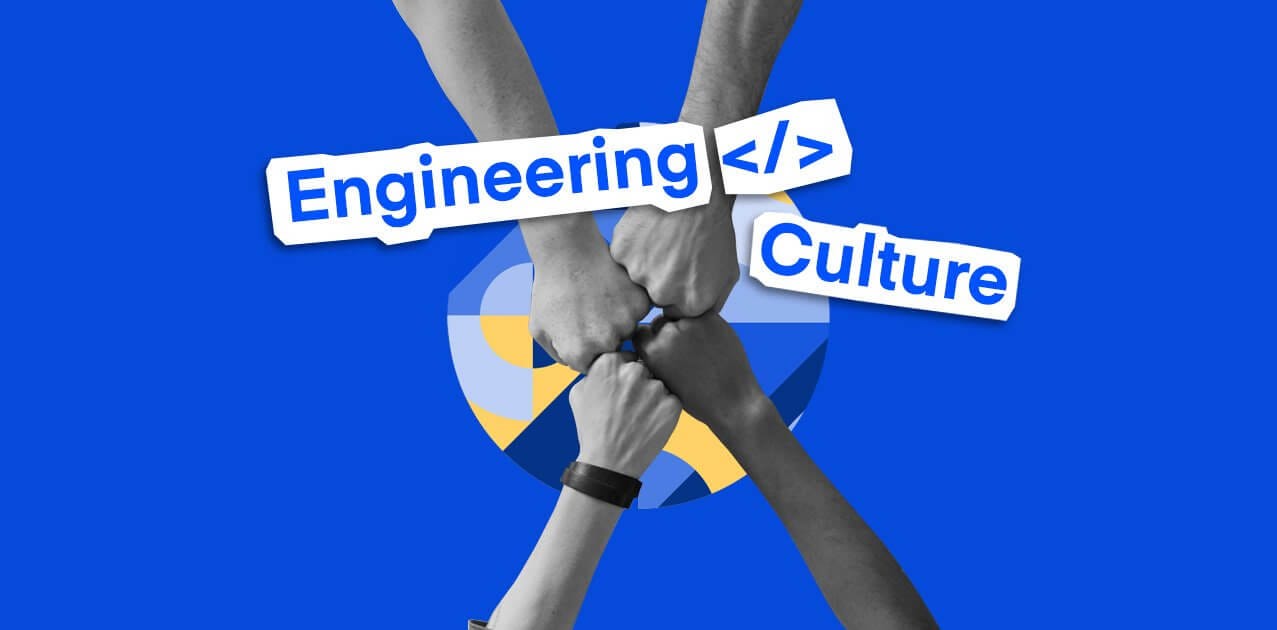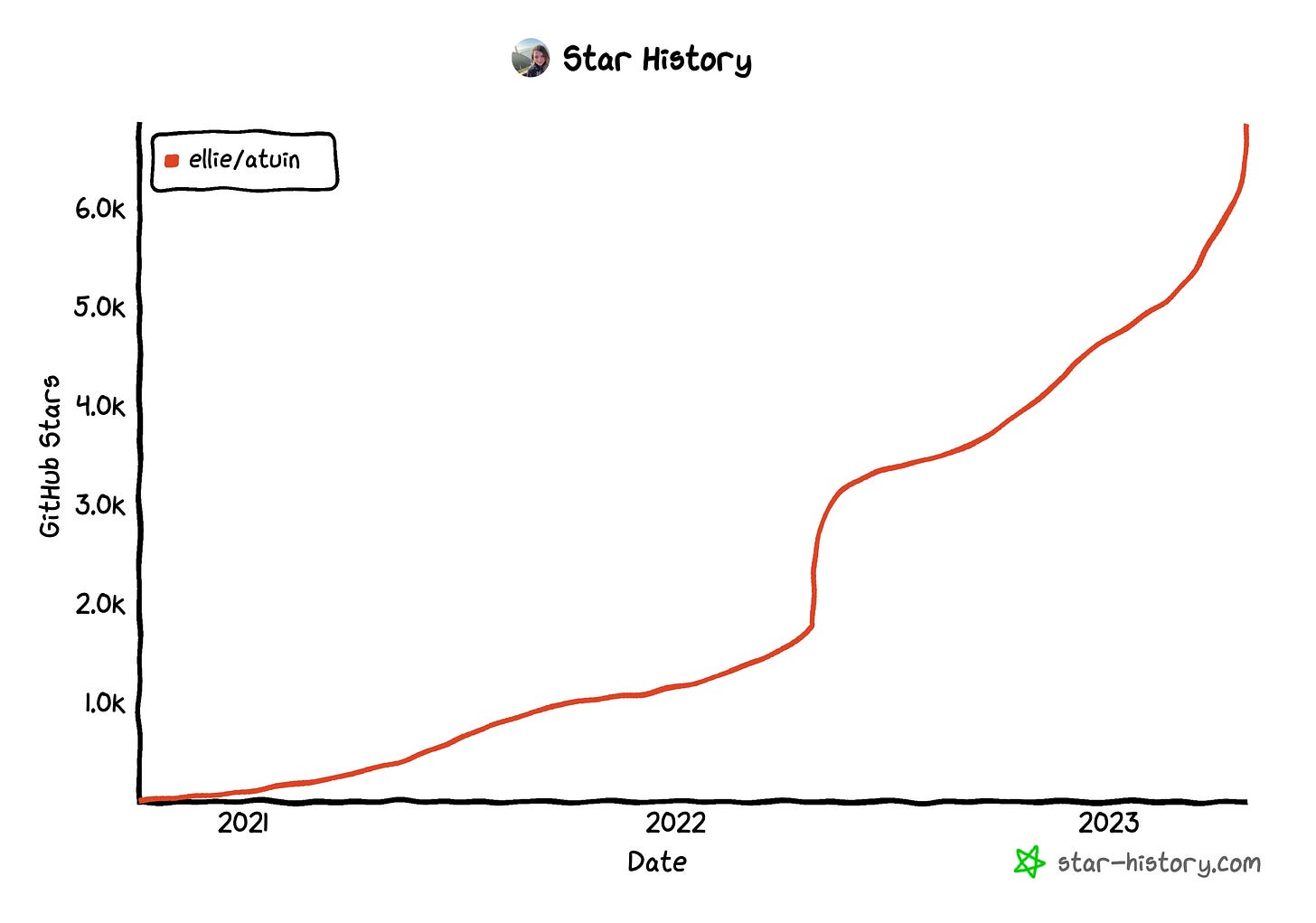DevTools Brew #8: How Atlassian Built a $10 Billion Growth Engine, How to Create a Great Engineering Culture, How Open Source Changed My Life...
Welcome to the DevTools Brew #8!
My name is Morgan Perry, co-founder of Qovery, and this is DevTools Brew newsletter, a weekly roundup of the latest trends and insights in the infrastructure and devtools industry.
To receive it in your inbox each week, subscribe here!
In this Issue #8:
💸 Latest Devtools Funding Rounds
📈 How Atlassian Built a $10 Billion Growth Engine
💻 The Ultimate Guide to a Great Engineering Culture
⭐ Star History Weekly Pick
🎬 How Open Source Changed My Life with Max Stoiber
I hope you will enjoy this sneak peek.
Let's dive in!
💸 Latest Funding Rounds
Replit, the web-based IDE developing a GitHub Copilot competitor, raised nearly $100M at a $1.16B post-money valuation.
Operant, a startup that changes the way you secure cloud native applications, announced a $3M Seed.
Video SDK, a live video infrastructure company, has secured $1.2M in funding.
WunderGraph, a Backend for Frontend Framework to optimize frontend, fullstack and backend developer workflows, secured a $3M seed round.
Reviewpad, a startup that streamlines code reviews with Ai, announced $1M funding.
📈 How Atlassian Built a $10 Billion Growth Engine
One of the most incredible and iconic software companies: Atlassian, the company behind products such as Jira, Confluence, and Trello.
Unlike many traditional enterprise-focused software companies like Microsoft, Oracle, and IBM, Atlassian has scaled its software business with a different model. At the time of their IPO, only 19% of their revenue was spent on sales and marketing 🤯.

Instead, Atlassian chose an unconventional path to build their business by consistently acquiring other products and integrating them into their suite of products. They did not build an enterprise sales team but focused on developing a loyal market by building a best-in-class project management tool for engineering teams.
Atlassian strategically expanded their product offerings through acquisitions to broaden their customer base and doubled down on freemium distribution and horizontal use cases in their recent acquisitions to widen the top of their funnel across teams. Many of Atlassian's strategies were unique for their time and have since become common practice for SaaS companies.
Key takeaways:
2002-2010: Self-funded and Freemium
Atlassian co-founders Mike Cannon-Brookes and Scott Farquhar saw the need for developer-specific tools around tracking issues and collaborating with one another, so they built Jira and Confluence.
To sell their products without paying for a sales team, they used a freemium plan to allow people to test out the tools without risk and onboarded more customers as they grew revenue.
Atlassian's products filled a gap in the market and offered a comprehensive solution for issue tracking, which was attractive to developers.
Atlassian's multi-product strategy paid off, and the company became profitable within three years of its founding without taking any venture capital.
2010-2015: Integrating Acquisitions and Spreading to Other Teams
In 2010, Atlassian raised $60 million in funding and used it for acquisitions and growth. They acquired Bitbucket, a hosted service for code collaboration, and integrated it into their existing freemium distribution model.
In 2012, they acquired Hipchat, a hosted private chat service, which helped entire organizations communicate and plug another hole in their product offerings.
In 2013, they released a service desk offering on top of Jira that targeted the IT market. This addition was based on the needs of Jira customers and helped extend Atlassian's offerings to IT departments.
In 2015, Atlassian combined all of their Git-based services under the Bitbucket brand and added features that supported larger distributed teams and projects.
Atlassian's strategy was about lock-in, offering a comprehensive suite of products that work well together rather than selling the superiority of individual products.
Atlassian charged very little for the initial products and sold a low number of seats, but as more team members were onboarded, more teams and users got pulled in, and the flywheel kicked into effect.
2015-Present: Expanding to Competitive and Lucrative Markets
Atlassian has been using acquisitions and integrations to expand into more lucrative and competitive markets.
Atlassian invested over 40% of their revenue into R&D after their IPO in 2015.
Atlassian acquired Statuspage in 2016 to expand its tool provider and help companies maintain their software.
In 2017, Atlassian acquired Trello to target smaller teams and to fill the gap in their distribution strategy as Jira moved upmarket and got more complex.
Atlassian later pivoted Hipchat’s services into an Atlassian-branded product called Stride, a Slack competitor for team-wide messaging.
Both Trello and Stride are freemium products that will be key for acquiring smaller teams that can’t afford to pay for enterprise products with enterprise functionality.
Atlassian's recent moves show that they are smartly growing product offerings for more widespread use cases in more competitive and lucrative markets while protecting their lock-in.
3 Key Lessons from Atlassian’s Growth
1. Focus on capital efficiency early on:
Lower CAC and grow revenue to improve capital efficiency.
Look for unique ways to lower CAC, such as effective marketing channels, onboarding freemium users to paid accounts, and inbound marketing through content and free trials.
Grow revenue by increasing prices, adding revenue streams from new products, and cross-selling users to other products and add-ons.
2. Own a particular customer segment:
Focus on one department or customer segment to evangelize your product.
Offer workshops and networking conferences with early groups of users in one specific market.
Talk to early customers within your target market about specific problems your product solves.
Build add-ons and new features specifically related to your target market before expanding out to other segments.
3. Choose the style of business you want to master:
Decide early on what is more important for your company to master.
Develop a concept to master and follow through in all decisions.
Factors to consider include initial vision for the company and product and long-term goals.
—> Check out the full article published by Hiten Shah
💻 The Ultimate Guide to a Great Engineering Culture
This article covers key ingredients of a great engineering culture, gathering insights and opinions from industry leaders and providing useful ways to uncover interesting trends and repeating themes.
A great engineering culture needs to balance multiple items in parallel and offer practical suggestions to create an environment where engineers can flourish.
Key Ingredients of a Great Engineering Culture
1. Developer Autonomy
Autonomy, mastery, and purpose are key factors in motivating developers
Developers should be given the autonomy to choose their own tools and make their own decisions.
Treating developers like children and not giving them enough freedom can stifle creativity and hinder the ability to learn.
The most important part of a developer's job is figuring out what to write and how to write it, not just writing code.
2. Create real relationships
Developer autonomy fosters better interpersonal relationships among team members
Authentic relationships are important to create a positive culture
Autonomy allows people to be the best versions of themselves
Hiring smart people who are fun to work with can further enhance the benefits of autonomy
3. Proactive Ownership & Accountability
Developers should take proactive ownership of their work, which includes a "bias for action".
Creating a culture of ownership and accountability can lead to positive outcomes for the team and the company.
4. Communicate and Explain “Why?”
Developers should communicate and ask "why" in order to understand the thought process behind decisions made by others.
Build a culture that offers the "why" up front, instead of waiting for someone to ask for an explanation.
Share your knowledge and explain why you made certain decisions, so others can learn from your best practices and unique thinking.
5. Transparency
Transparency is important for creating an environment where engineers can see the bigger picture.
Creating such an environment can help developers create better code.
6. Integrity
Maintaining communication and transparency helps to build integrity within the team.
Team members should speak up if they think something is not right.
Continuous improvement is a critical aspect of building a good engineering culture.
7. Zero Blame
Blameless feedback and post-mortem culture is critical for a good engineering culture.
Everyone on the team should be open to receiving feedback.
A zero-blame culture can be achieved by working on underlying assumptions that everyone means well.
Developing trust and understanding is important for building a great culture over time.
8. Collaboration
Teams need to collaborate to surface the best solutions and to ensure the end goal is achieved.
A collaborative team will outperform a less collaborative team even if the latter is filled with amazing individual engineers.
Passion for the craft and the product is essential to building a great engineering culture.
Hiring smart people who want to work on the project can significantly improve morale and output.
9. Professionalism
Engineers should always keep the company's needs in mind when making decisions.
Pride in the craft and a passion for the product can help boost morale and output.
Engineers should always be looking for ways to improve processes and systems.
10. Create a Great Documentation Culture
A great documentation culture can help catch design issues and mismatched expectations sooner rather than later.
11. Create a Great Documentation Culture
Teams should optimize for iteration speed
Reducing the time it takes between an engineer writing code and users using it is key
Effortless rollbacks can help ensure a smooth delivery process
12. Humility
Team members should be willing to help each other and not feel afraid to ask questions.
A mission-oriented team with shared goals can achieve amazing things.
Nice people, professionalism, and pride in the craft are also key ingredients to a great engineering culture.
—> Read the full article - This guide is a must-read for companies looking to build a better engineering culture.
⭐ Star History Weekly Pick
The Star History Weekly Pick is:
Atuin: “Magical shell history”
⭐️ 6.8k stars reached
Github: https://github.com/ellie/atuin
🎬 How Open Source Changed My Life with Max Stoiber
Spending a day with Open Source-“Wunderkind” Max Stoiber in Vienna. Despite his young age of only 23, Max has achieved incredible things: he's created react-boilerplate and styled components, his start-up, Spectrum, was recently acquired by GitHub, and he gives talks worldwide. Learn more about his journey - and how he dropped out of university (twice!) - in this mini-doc.
It’s already over! If you have any comments or feedback, Let’s talk about this together on LinkedIn or on Twitter.
Thanks for reading,
Morgan
Please share DevTools Brew with your friends, and subscribe






Great email. The content gets clipped on the right hand side when viewing on Superhuman iOS
About "Key Ingredients of a Great Engineering Culture" I think there is one word to summarize all your points: enpower.
For me enpowered teams is the key. This is not easy to get but it should be a goal.